Key takeaways
- The Chupacabra myth originated in Puerto Rico in the mid-1990s, driven by reports of livestock mysteriously dying, and showcases how folklore can emerge from collective fears and local realities.
- Common sightings often evoke a mix of skepticism and genuine fear, highlighting the psychological impact of encountering something inexplicable.
- Personal encounters with the myth emphasize the emotional weight of such experiences, where the thrill of the unknown challenges our understanding of reality.
- Discussing paranormal myths fosters connection among people, as sharing experiences and beliefs transforms these stories into a communal narrative that satisfies our curiosity about the unknown.
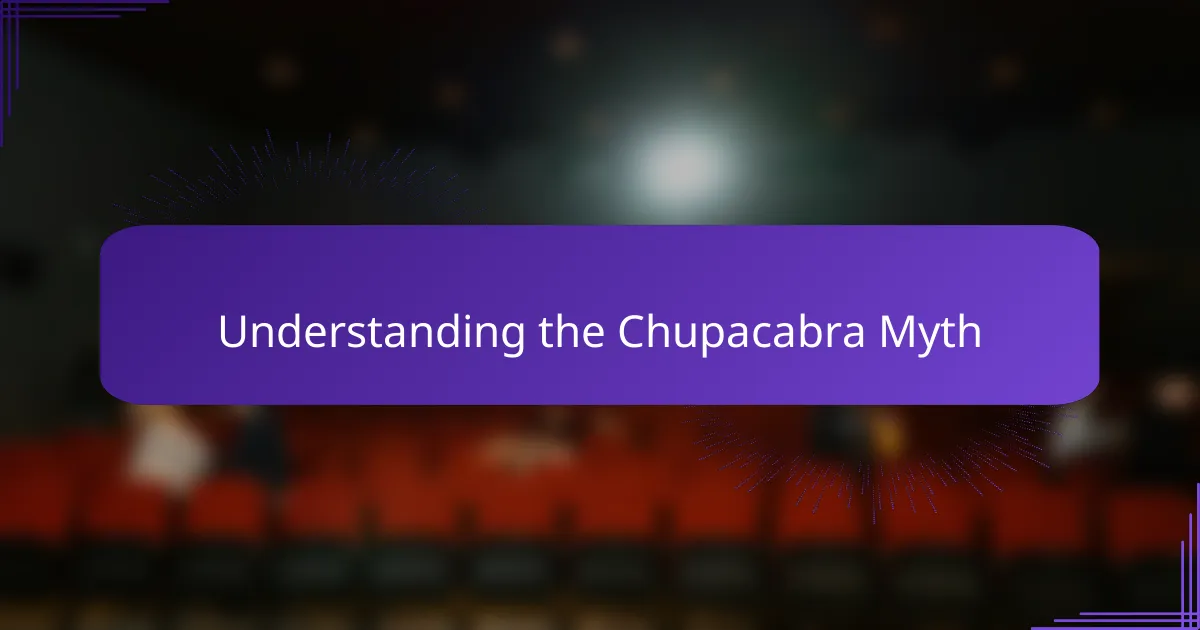
Understanding the Chupacabra Myth
The Chupacabra myth has always fascinated me because it sits at the crossroads of fear and curiosity. What makes this creature so enduring in popular culture? I think it’s the blend of mystery and the primal fear of the unknown, which sparks our imagination in ways few other myths do.
From what I’ve learned, the legend began in Puerto Rico in the mid-1990s, describing a blood-sucking beast preying on livestock. But isn’t it interesting how sightings and descriptions vary so widely? This inconsistency makes me wonder if the myth serves as a collective way to explain unexplainable events rather than an actual creature lurking in the shadows.
Personally, encountering stories about the Chupacabra has made me reflect on how myths evolve. I remember debating with friends late into the night, questioning if the myth was fear-driven folklore or a genuine paranormal phenomenon. That blend of skepticism and belief is what keeps the legend alive for me, illustrating how powerful and personal these stories can be.
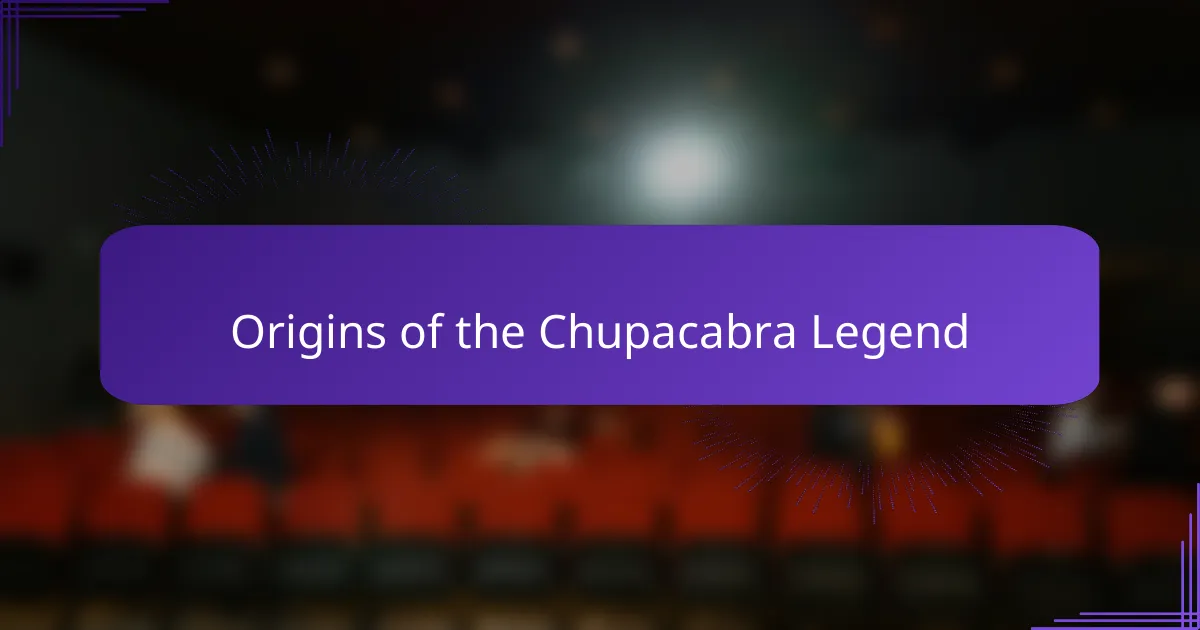
Origins of the Chupacabra Legend
The origins of the Chupacabra legend always struck me as a perfect example of how folklore can spring from a mix of fear and local realities. I’ve read that it first appeared in Puerto Rico, sparked by reports of mysterious livestock deaths in the mid-1990s. But what really grabbed my attention was how quickly this story spread, adapting and changing with each new retelling.
I’ve often wondered why such a specific image—this creature draining animals of their blood—resonated so deeply that it became a full-blown myth. Could it be our need to make sense of sudden misfortunes by personifying them into a tangible monster? When I think about it, our minds seem wired to create stories that offer explanations, especially when facts fall short.
Talking with friends about the legend, I realized how personal these origin stories feel. Some see the Chupacabra as a modern urban legend born from fear of the unknown, while others swear they’ve witnessed something inexplicable. For me, the origin tale isn’t just about a creature; it’s about how myths evolve to reflect our collective anxieties and hopes.
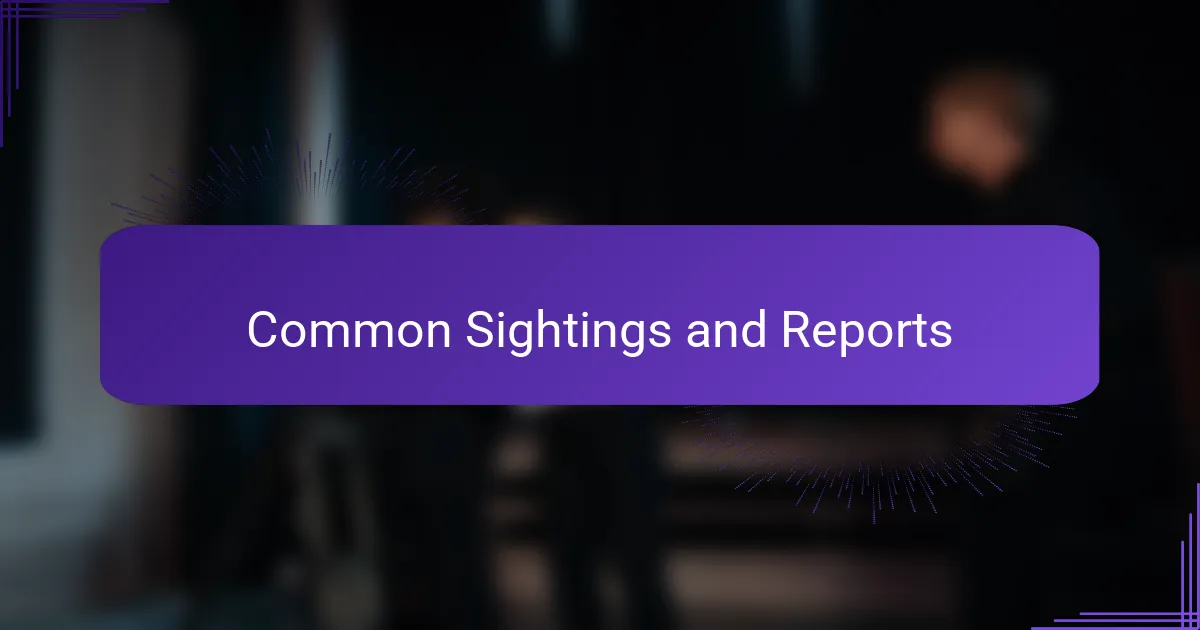
Common Sightings and Reports
I’ve heard countless tales of Chupacabra sightings, often involving ranchers discovering livestock mysteriously drained of blood overnight. These reports always make me pause—could these be simple predators or something more enigmatic? The recurring theme of an unknown creature stalking the shadows taps into a deep-seated fear that I find both thrilling and unsettling.
One account I find particularly gripping involved a family living near the border, who claimed to have seen a strange, spiky-backed creature darting into the bushes at dusk. I remember thinking, “What would I do if I stood face to face with something so otherworldly?” That story stuck with me because it blends the eerie familiarity of rural life with the edge of the supernatural.
What amazes me is how these sightings often come with a sharp mix of skepticism and outright terror. People question what they saw, yet their fear feels genuine, as if the presence of the Chupacabra leaves a mark beyond mere explanation. Have you ever had a moment when experience pushes you to believe in something just a little beyond reason? That’s the kind of tension these reports create—and it’s what makes the myth so alive.
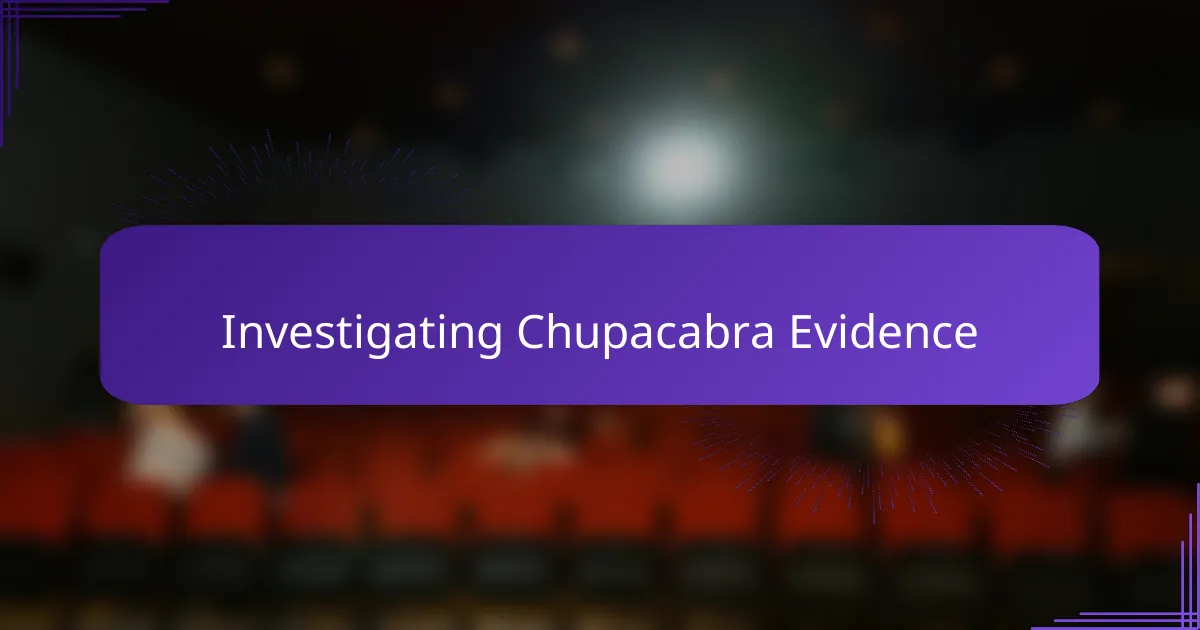
Investigating Chupacabra Evidence
When I started digging into the actual evidence behind the Chupacabra myth, I found myself caught between curiosity and skepticism. Tracks and carcasses were often presented as proof, but when I looked closer, many of these “signs” seemed explainable by more common predators or environmental factors. Doesn’t it make you wonder how much of what we accept as evidence is just our mind filling in scary gaps?
One case stuck with me—a rancher showed me photos of livestock wounds that were supposedly from the Chupacabra. To my eye, the bite patterns and blood loss didn’t match any known behavior of wild animals, yet experts suggested parasites or disease could cause similar signs. This made me realize how tricky it is to separate genuine mystery from natural explanations masquerading as the paranormal.
Still, I can’t shake the feeling that some of the evidence carries an emotional weight beyond the physical. When people bring their stories and artifacts, their fear and uncertainty become part of the ‘proof’ itself. Hasn’t it happened to you, where the emotion behind an experience makes it feel undeniably real—even if the facts are murky? That’s the fascinating challenge in investigating Chupacabra evidence.
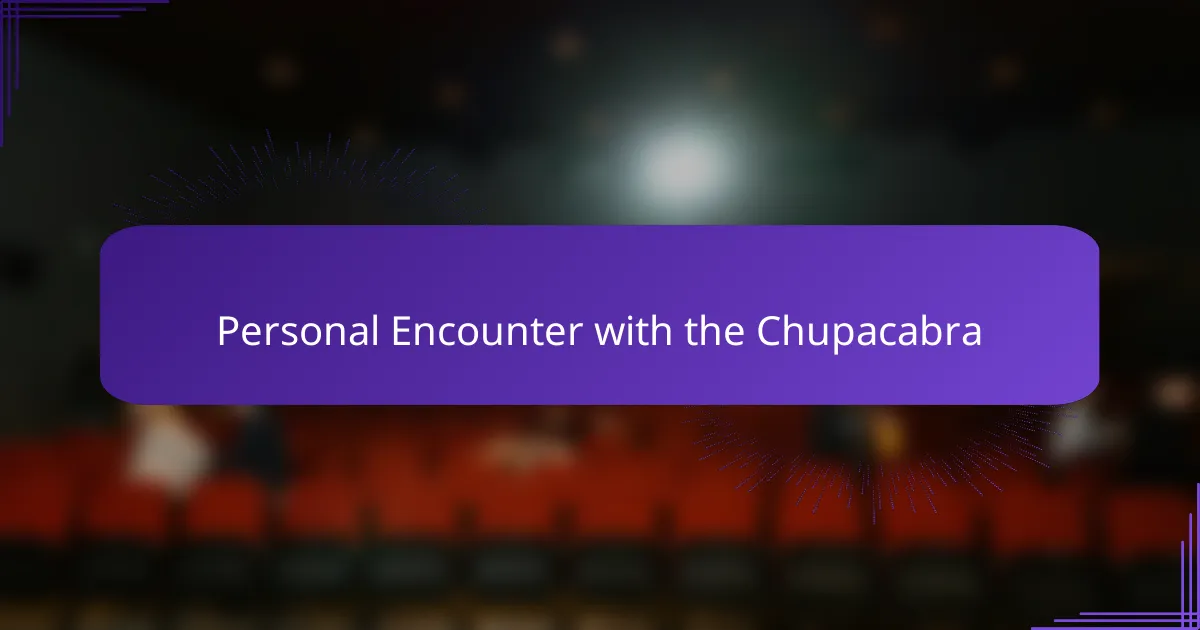
Personal Encounter with the Chupacabra
I’ll never forget the night I first thought I might have crossed paths with something like the Chupacabra. I was visiting a remote area after hearing about strange livestock deaths nearby. Walking back to my car, I caught a glimpse of something small, dark, and unnervingly quick disappearing behind the bushes. Was it just a wild animal—or something else entirely? That moment still sends a chill down my spine because it felt charged with an eerie presence I can’t fully explain.
What struck me most wasn’t the creature itself but the silence it left behind. No growls, no rustling—just an unsettling stillness that seemed to stretch on. Have you ever experienced that sudden hush in nature that makes your skin crawl? In that instant, my skepticism wavered, replaced by a raw, primal unease that I hadn’t expected to feel.
Reflecting on that night, I realize how personal these encounters with the unknown can be. It wasn’t about capturing proof or solving the mystery—it was about how that fleeting brush with something strange made me question what I thought was real. Isn’t that part of why legends like the Chupacabra persist? They reach into our deepest fears and uncertainties, reminding us that some mysteries might just be beyond explanation.

Lessons Learned from the Experience
The biggest lesson I took away from my experience with the Chupacabra myth is how much our minds crave meaning when faced with the unknown. I remember feeling this tug between wanting a clear explanation and being pulled into the mystery itself. Have you noticed how sometimes not having all the answers makes the story even more compelling? That tension, I think, teaches us to sit comfortably with uncertainty instead of rushing to closure.
Another insight for me was realizing how much fear shapes folklore—and not just in a distant, abstract way. That night when I glimpsed something moving in the shadows, my heart was pounding, and suddenly I understood how powerful a shadow can become when fear feeds it. It made me reflect on how easily legends form from a mix of emotion and imagination, reminding me that our experiences are as much about feeling as fact.
Finally, I learned that paranormal stories like this aren’t just about proving or debunking; they’re about connection. Sharing these experiences with others, hearing their doubts and beliefs, showed me how myths bond us through shared wonder and sometimes shared anxiety. Isn’t that, after all, one of the most human things—coming together to grapple with mysteries that defy easy answers?
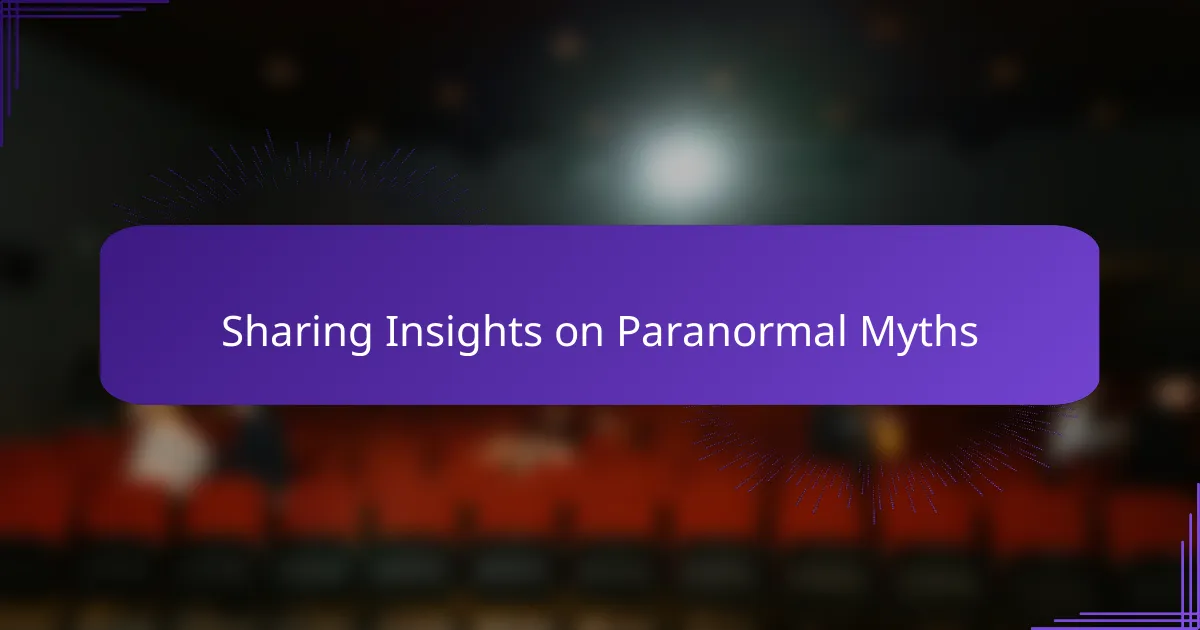
Sharing Insights on Paranormal Myths
When I talk about paranormal myths like the Chupacabra, I find it fascinating how each story reflects not just fear but also our need to understand the unknown. Have you noticed how these myths often evolve as people share their experiences, blending fact with imagination? That sharing creates a kind of communal narrative that’s both comforting and thrilling.
From my experience, discussing these myths openly invites a mix of skepticism and wonder. I recall a late-night conversation where someone insisted on a paranormal explanation, while another leaned toward logical reasons. It made me realize how these myths serve as a mirror to our own beliefs and doubts, drawing us into an ongoing dialogue.
What I appreciate most about sharing insights on paranormal myths is how it builds connection. When people recount their encounters or theories, it’s not just about proving or disproving—it’s about feeling part of something larger, a shared mystery that captures our curiosity and fuels our stories. Isn’t that the true magic behind these legends?